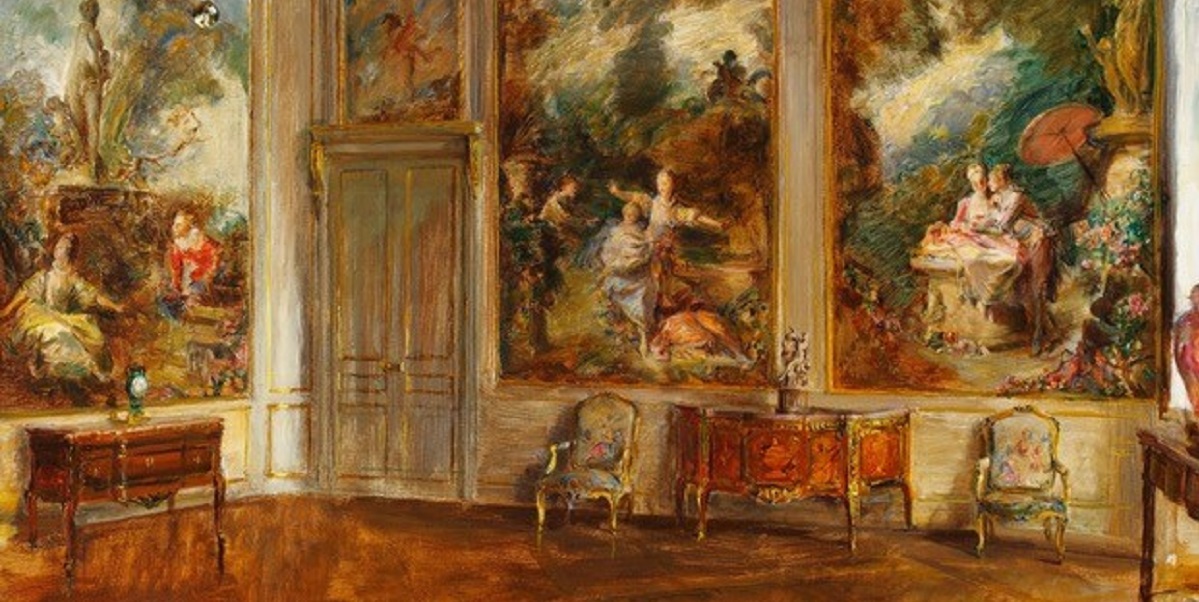New York Mansions: The Emergence of a French Style in America
From the decades following the American Civil War to the early years of the the 20th century, a period of rapid economic growth spurred by immigration, industrialisation, the expansion of the railways and opening up of the West saw the emergence of a new class of immensely wealthy industrialists. These princes of capitalism, known pejoratively as ‘robber barons’, joined the establishment of America’s great cities, both inheriting and amplifying the taste, style and social codes that swirled around the operas, balls, town houses and country retreats of the elite.
The period was chronicled in the novels of Edith Wharton and Henry James, as well as Mark Twain who ironically coined the term ‘the Gilded Age’. The display of these riches were, perhaps, a thin veneer as Twain suggested; but the architectural, aesthetic and philanthropic legacy of the Gilded Age years remains crucial to understanding the evolution of American cultural life of the late-19th and early-20th centuries.
During these decades, New York was seized by a passion for French architecture and decoration. Palatial residences were built on Upper Fifth and Park Avenues, while 18th- and 19th-century French decorative arts poured into public and private collections from Paris and London. The result was a unique style of interior decoration, its opulence signalling to the world that America had shed its provincialism and would compete with Europe on the cultural front line.
In July, Christie’s Education will present a new short course highlighting important collectors, decorators and trends of the time. New York Mansions: The Emergence of a French Style in America will situate New York City mansions within the broader context of an international art market and consider the ways in which prominent figures like Alva Vanderbilt Belmont and Caroline Schermerhorn Astor, Jules Allard and Sons and Duveen Brothers created and adapted antique French style homes in America.
The dizzying accumulation of wealth saw patrons competing to build houses as temples of social ritual and high society in Châteauesque, Neoclassical and Beaux-Arts styles. Their appetite for European fine and decorative arts and interiors took form in Sèvres porcelain, furniture by the great ébénistes, Gobelins and Beauvais tapestries, sculpture by Jean-Antoine Houdon, and paintings by Eugène Boudin and William-Adolphe Bouguereau. These objects were a manifestation of a desire to establish a foothold in the heritage, taste and discernment of the Western tradition, alongside an ambition to join the ranks of The Four Hundred, the ‘aristocracy’ whose position and wealth were adjudicated by the grandees of New York society.
Led by Laura C Jenkins, an art and architectural historian specialising in French-style interiors of the Gilded Age, the course will look at the the patrons and projects associated with the development of a French interior decorating style, and the architects, art dealers and decorators who capitalised on the social aspirations of the upper echelons of American society. Each session will look at major themes in mansion building and furnishing through the prism of social, architectural, and commercial conditions, the variation of architectural design and its denouement with the demolition and dispersal of the great houses and collections in the 20th century.
With the end of the Gilded Age around the time of the First World War, many of Manhattan’s great houses disappeared as apartment buildings crept up the avenues. Yet it left behind a significant cultural legacy: New York was established as a centre of the international art market, and many great collections were gifted to public institutions.
Acquisitions by the Duveen Brothers, the period’s most prominent art and antique dealers, illustrate the remarkable philanthropic inheritance left by Gilded Age figures, and the influence their collecting has had on future generations. There are thousands of objects obtained by the Duveens in the National Gallery of Art and Metropolitan Museum of Art, alongside substantial holdings in the Philadelphia Museum of Art and Frick Collection — the Beaux-Arts mansion built for the steel magnate Henry Clay Frick that is perhaps the greatest Gilded Age treasure house accessible today.
Echoing the great patrons of the Gilded Age, recent sales by Christie’s such as the collections of Peggy and David Rockefeller, Jayne Wrightsman, A Jerrold Perenchio and Mrs Henry Ford II exemplify the continued influence of French art and interiors on 20th-century taste, and the contributions made by their predecessors to the cultural landscape of America.
Course is running Fridays from July 2 - 30, 2021.
Find out more

